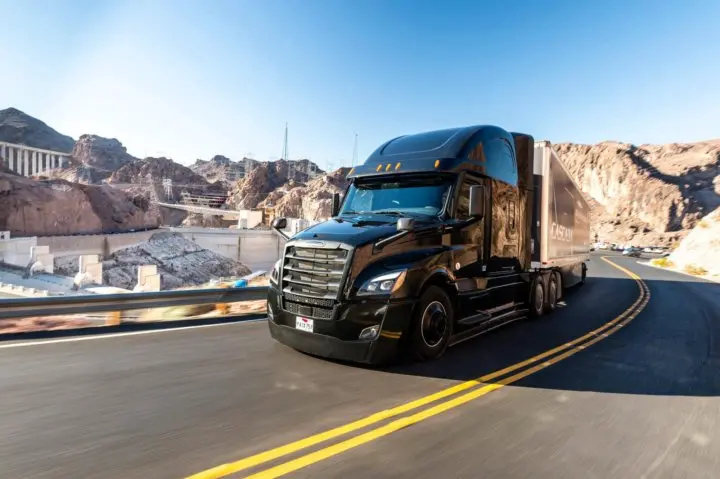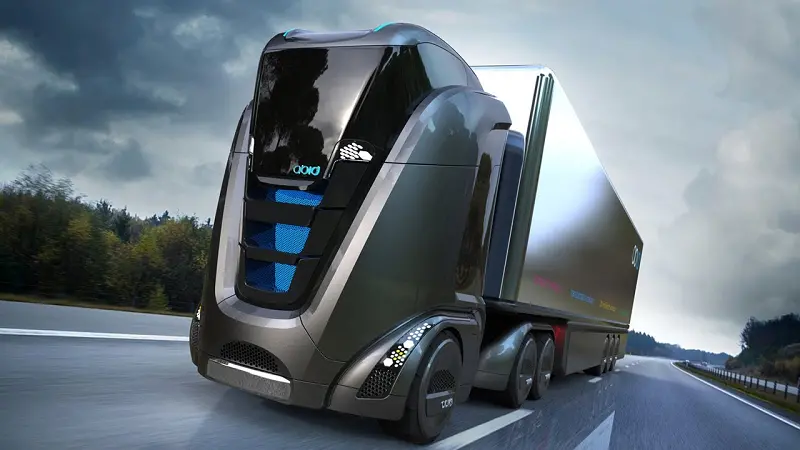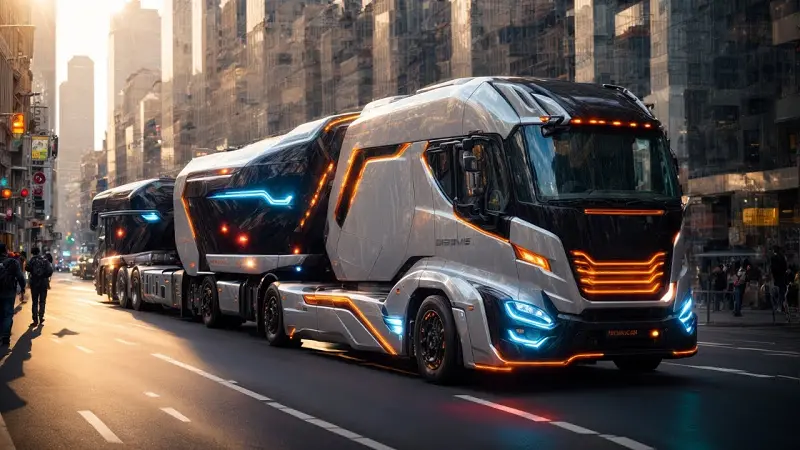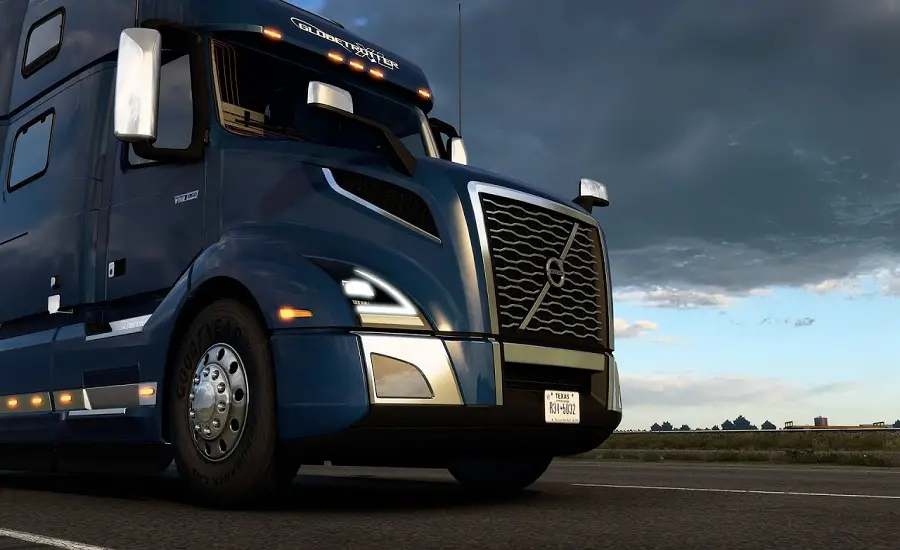The Rise of the American Truck 2025
The story of American trucks is one of innovation, resilience, and unwavering devotion to power, versatility, and style. It all began with the early pioneers in truck manufacturing, who recognized the growing need for robust, dependable vehicles capable of meeting the demands of a rapidly industrializing nation.
One of the earliest and most influential players in the American truck market was the Ford Motor Company. In 1917, Ford introduced the Model TT, the first mass-produced truck designed for commercial use. This rugged, affordable vehicle became an instant hit, paving the way for Ford’s dominance in the truck segment for decades to come.
Key Facts:
- The Ford Model TT was the first mass-produced truck designed for commercial use, introduced in 1917.
- It was an affordable, robust vehicle that helped establish Ford’s leadership in the American truck market.
The impact of World War II on the American truck industry cannot be overstated. As the nation geared up for the war effort, truck manufacturers played a crucial role in supplying the military with the vehicles it needed. Companies like Studebaker, Dodge, and Chevrolet ramped up production, introducing innovative designs and features to meet the demands of the armed forces.
Case Study: The Iconic Dodge WC Series
The Dodge WC series, produced from 1940 to 1945, became a true workhorse of the war effort. These versatile 4×4 trucks were used for a wide range of military applications, from troop transport to weapons carriers. Their rugged construction and powerful engines made them essential tools in the Allied victory.
When you think of American trucks, you’re not just imagining a vehicle you’re witnessing a symbol of industrial strength, innovation, and national pride. From the dusty farmlands to bustling urban highways, these mechanical marvels have transformed transportation, defined work cultures, and become an integral part of the American experience.
The Roots of American Truck Manufacturing
American trucks didn’t emerge overnight. They evolved from simple horse-drawn wagons to sophisticated machinery that now dominate global transportation. The journey began in the early 1900s when manufacturers like Ford and Chevrolet recognized the potential for vehicles that could handle both commercial and personal transportation needs.
Key Milestones in Truck Development
| Year | Milestone | Manufacturer | Significance |
| 1908 | First Model T Truck | Ford | Revolutionized commercial transportation |
| 1918 | First Factory-Built Pickup | Ford | Standardized truck manufacturing |
| 1954 | First V8 Truck Engine | Chevrolet | Increased power and performance |
| 2015 | Aluminum Body F-150 | Ford | Significant weight reduction technology |

Iconic American Truck Brands
As the American economy boomed in the postwar era, the truck market experienced a period of rapid growth and diversification. Iconic brands emerged, each with their own distinct identities and loyal followings.
Ford F-Series: The Quintessential American Workhorse
The Ford F-Series, first introduced in 1948, has long been the standard-bearer of the American truck market. Over the decades, the F-Series has evolved to meet the changing needs of consumers, offering a wide range of models that cater to everything from job site hauling to family-friendly transportation.
Key Specifications:
- Current Model: Ford F-150
- Engine Options: 3.3L V6, 2.7L Eco Boost V6, 3.5L Eco Boost V6, 5.0L V8, 3.0L Power Stroke Diesel V6
- Towing Capacity: Up to 14,000 lbs
- Payload Capacity: Up to 3,325 lbs
Chevrolet Silverado: Combining Power and Versatility
The Chevrolet Silverado has long been a formidable competitor in the American truck market, offering a winning combination of power, capability, and refinement. Over the years, the Silverado has earned a reputation for being a workhorse that can handle the toughest jobs while providing a comfortable and modern driving experience.
Key Specifications:
- Current Model: Chevrolet Silverado 1500
- Engine Options: 2.7L Turbo, 5.3L V8, 6.2L V8, 3.0L Duramax Turbo Diesel
- Towing Capacity: Up to 13,300 lbs
- Payload Capacity: Up to 2,280 lbs
Ram Trucks: Redefining the Luxury Pickup Segment
While the Ford F-Series and Chevrolet Silverado have long dominated the mainstream truck market, Ram Trucks has carved out a unique niche for itself by redefining the luxury pickup segment. With its upscale interior, advanced technology, and powerful engine options, the Ram lineup has become a favorite among discerning truck buyers.
Key Specifications:
- Current Model: Ram 1500
- Engine Options: 3.6L V6, 5.7L HEMI V8, 3.0L EcoDiesel V6
- Towing Capacity: Up to 12,750 lbs
- Payload Capacity: Up to 2,300 lbs
GMC Sierra: A Blend of Sophistication and Capability
The GMC Sierra, a close cousin to the Chevrolet Silverado, has long been the choice for those seeking a more premium and sophisticated truck experience. With its upscale interior, advanced features, and impressive performance, the Sierra has earned a loyal following among truck enthusiasts who value both capability and refinement.
Key Specifications:
- Current Model: GMC Sierra 1500
- Engine Options: 2.7L Turbo, 5.3L V8, 6.2L V8, 3.0L Duramax Turbo Diesel
- Towing Capacity: Up to 11,800 lbs
- Payload Capacity: Up to 2,240 lbs

Technological Advancements in American Trucks
As the American truck market has evolved, so too have the technologies that power these iconic vehicles. From improved engine performance and fuel efficiency to advanced safety features and driver assistance systems, the latest generation of American trucks is pushing the boundaries of what’s possible.
Powertrain Innovations
One of the most significant advancements in American trucks has been the development of more powerful and efficient engines. Automakers have invested heavily in turbocharging, direct injection, and other technologies to boost power and fuel economy without sacrificing capability.
Table: Engine Specifications Across American Truck Brands
| Brand | Engine | Horsepower | Torque (lb-ft) | Fuel Economy (Combined) |
| Ford | 3.5L EcoBoost V6 | 400 | 500 | 21 mpg |
| Chevrolet | 6.2L V8 | 420 | 460 | 16 mpg |
| Ram | 3.0L EcoDiesel V6 | 260 | 480 | 26 mpg |
| GMC | 3.0L Duramax Turbo Diesel | 277 | 460 | 25 mpg |
Safety and Driver Assistance Features
American truck manufacturers have also placed a strong emphasis on safety, introducing a range of advanced features to help protect both drivers and passengers. From forward collision warning systems to lane departure alerts, these technologies are transforming the driving experience.
List of Common Safety and Driver Assistance Features in American Trucks:
- Automatic Emergency Braking
- Adaptive Cruise Control
- Lane Departure Warning
- Blind Spot Monitoring
- Rear Cross-Traffic Alert
- 360-Degree Camera System
- Parking Assist
Alternative Fuel Options
As the push for sustainability grows, American truck manufacturers are also exploring alternative fuel options to reduce their environmental impact. From hybrid powertrains to all-electric models, the future of the American truck is poised to be both eco-friendly and powerful.
Spotlight: The Ford F-150 Lightning
Ford’s all-electric F-150 Lightning is a prime example of the American truck industry’s commitment to sustainable mobility. With a range of up to 300 miles and the ability to power a home during outages, the F-150 Lightning represents a bold step forward for the iconic Ford F-Series.
The Changing Landscape of American Trucks
As the American truck market continues to evolve, manufacturers are faced with a complex and ever-changing landscape. From shifting consumer preferences to environmental regulations, the industry must adapt to meet the demands of the modern world.
Market Trends and Consumer Preferences
In recent years, there has been a noticeable shift in consumer preferences, with more and more buyers seeking out trucks that offer a blend of capability, comfort, and technology. Automakers have responded by introducing more luxurious and feature-rich models, blurring the lines between traditional work trucks and family-oriented vehicles.
Statistic: According to a recent industry report, the demand for full-size pickup trucks in the United States has increased by 15% over the past five years, with the luxury and premium segments leading the charge.
Environmental Regulations and Sustainability Efforts
As concerns about climate change and emissions grow, the American truck industry is under increasing pressure to reduce its environmental impact. Automakers are investing heavily in developing more fuel-efficient and alternative-fuel models, as well as exploring ways to improve the overall sustainability of their vehicles and manufacturing processes.
Fact: The U.S. Environmental Protection Agency (EPA) has implemented stricter fuel efficiency standards for light-duty vehicles, including trucks, aimed at reducing greenhouse gas emissions and improving overall environmental performance.
The Impact of Autonomous and Connected Technologies
The emergence of autonomous and connected vehicle technologies is also transforming the American truck landscape. From self-driving features to advanced telematics and over-the-air software updates, these innovations are poised to revolutionize the way we think about and use trucks in the years to come.
Case Study: Autonomous Truck Trials in the United States
Several major American truck manufacturers, including Volvo and Daimler, have been conducting extensive trials of their autonomous truck technologies on public roads in the United States. These tests have showcased the potential of self-driving trucks to improve safety, efficiency, and productivity in the transportation sector.

The Future of American Trucks 2025
As the American truck industry continues to evolve, the future promises even more exciting advancements and innovations. From cutting-edge design and engineering to emerging use cases and applications, the enduring legacy of American trucks is poised to reach new heights.
Emerging Design and Engineering Innovations
American truck manufacturers are constantly pushing the boundaries of what’s possible, introducing bold new designs and engineering breakthroughs that enhance both performance and aesthetics. From lightweight materials to advanced aerodynamics, the next generation of American trucks is set to redefine the driving experience.
Trend: The increasing use of aluminum and high-strength steel in American truck construction has led to significant weight reductions, improving fuel efficiency and payload capacity without sacrificing strength or durability.
Expanding Use Cases and Applications
As the versatility of American trucks continues to grow, so too do the ways in which they are being utilized. From off-road adventuring to job site hauling and beyond, these iconic vehicles are proving themselves to be essential tools in a wide range of industries and lifestyle applications.
Spotlight: The Rise of the Overlanding Trend
The growing popularity of overlanding, a form of self-reliant adventure travel, has led to a surge in demand for American trucks equipped with off-road capabilities, rugged accessories, and ample storage solutions. Automakers have responded by introducing specialized models and packages tailored to the needs of this adventurous community.
The Role of American Trucks in a Evolving Transportation Landscape
As the world around us continues to change, the American truck industry is poised to play a pivotal role in shaping the future of transportation. Whether it’s through the development of advanced propulsion systems, autonomous technologies, or innovative applications, American trucks will undoubtedly remain a cornerstone of our evolving transportation landscape.
Frequently Asked Questions About American Trucks
What are the most popular American truck brands?
The most iconic and popular American truck brands include the Ford F-Series, Chevrolet Silverado, Ram Trucks, and GMC Sierra. These brands have dominated the American truck market for decades, each offering a unique blend of power, capability, and brand identity. The Ford F-Series, in particular, has been the best-selling truck in the United States for over 40 years, solidifying its status as the quintessential American workhorse.
How do American trucks compare to their foreign counterparts in terms of capabilities?
American trucks have long been known for their impressive capabilities, often outperforming their foreign-made competitors in areas like towing capacity, payload, and off-road performance. This is achieved through the use of robust, high-powered engines, advanced 4×4 systems, and rugged chassis designs. While foreign truck models have made strides in recent years, American trucks continue to set the benchmark for sheer capability and brute strength.
What are the latest technological advancements in American trucks?
American truck manufacturers have been at the forefront of technological innovation, incorporating features like advanced safety systems, connectivity, and alternative fuel options. Notable advancements include adaptive cruise control, lane departure warning, blind spot monitoring, and the introduction of hybrid and electric powertrain options, such as the Ford F-150 Lightning. These innovations are not only enhancing the driving experience but also addressing the growing demand for more sustainable and technologically advanced vehicles.
How have environmental regulations impacted the American truck industry?
The American truck industry has faced increasing pressure to reduce its environmental impact, with stricter fuel efficiency standards and emissions regulations driving manufacturers to develop more eco-friendly models. This has led to the adoption of technologies like turbocharging, direct injection, and alternative fuel options, all aimed at improving fuel economy and lowering emissions without sacrificing the power and capability that American truck buyers demand.
What are some of the emerging trends in the American truck market?
Emerging trends in the American truck market include the growing popularity of luxury and premium models, the rise of overlanding and off-road adventures, and the increasing integration of autonomous and connected technologies. Automakers are responding to these trends by introducing more feature-rich, sophisticated truck offerings, as well as exploring the potential of self-driving capabilities and advanced telematics to enhance the overall driving experience.
Conclusion
The American truck industry has a storied history of innovation, resilience, and unwavering dedication to power, versatility, and style. From the early pioneers to the iconic brands of today, these vehicles have become an integral part of the American fabric, serving as workhorses, family haulers, and symbols of rugged individualism.
As the industry continues to evolve, responding to changing consumer preferences, environmental concerns, and technological advancements, the future of American trucks remains bright. With a commitment to continuous improvement and a steadfast focus on meeting the diverse needs of their customers, the manufacturers of these iconic vehicles are poised to write the next chapter in the enduring legacy of American trucks.
Expert Quote: “An American truck isn’t just a vehicle—it’s a statement of capability, innovation, and national pride.” – Anonymous Automotive Engineer

With over 5 years of dedicated experience in the automotive industry, I am passionate about all things automotive. My journey began with a deep curiosity for automobiles, which led me to delve deeper into their mechanics, technology and trends. My expertise spans various aspects of the automotive world, from the latest electric vehicles to classic car restoration techniques. Through my articles, I aim to share my knowledge and insights, helping readers stay informed and inspired in the fast-paced world of the automobile.











